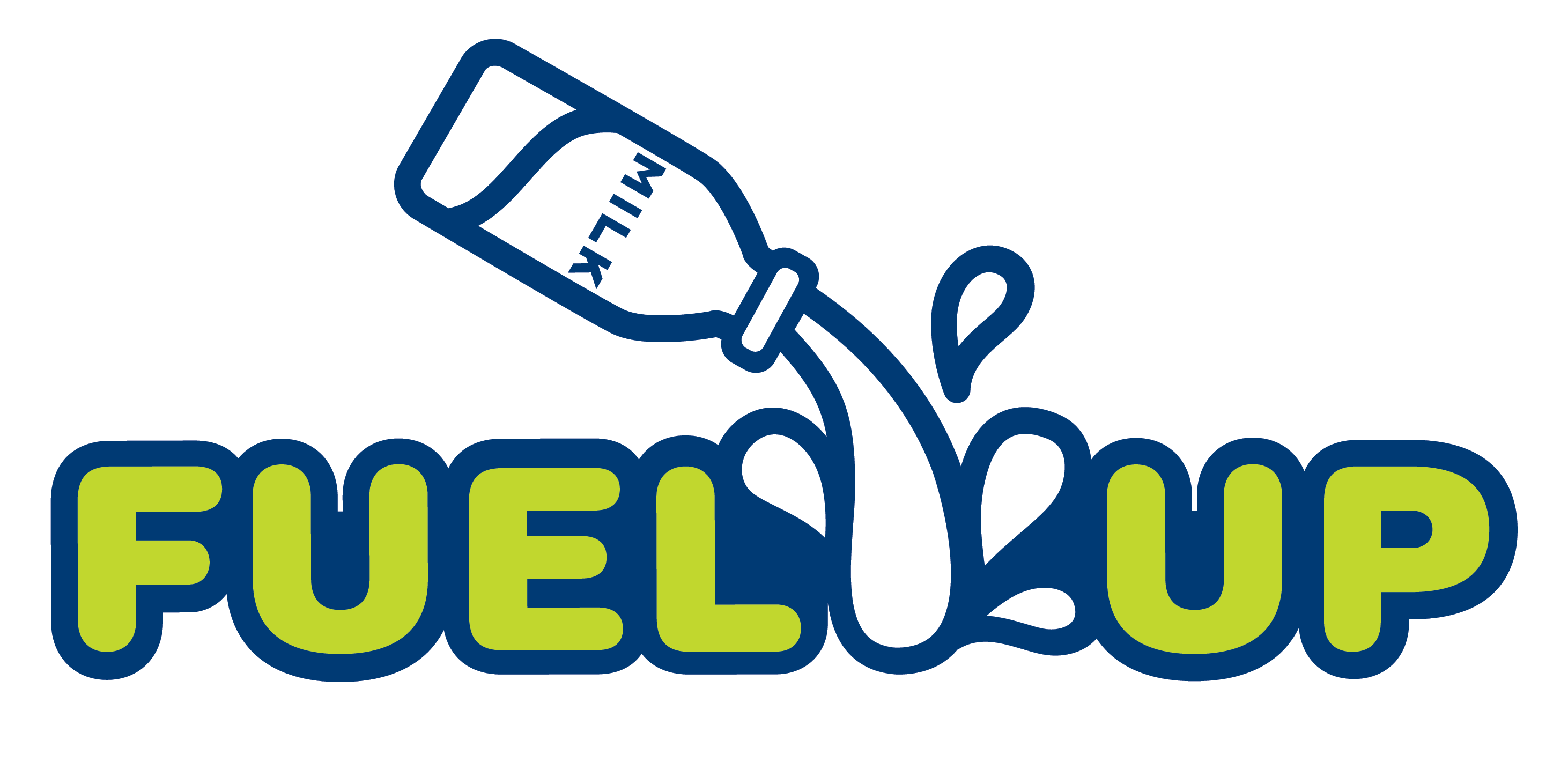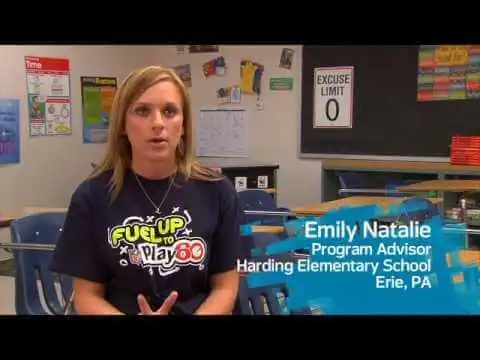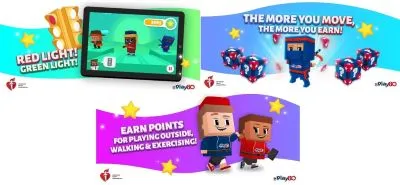OVERVIEW
What You'll Learn
Learn about the benefits of exercise breaks throughout the day
What You'll Do
In this Play, you will encourage all students to get active by adding short physical activity breaks during classes every day. Whether you and the school's teachers choose stretching, jumping jacks, workout videos, or dance breaks, you can get everyone motivated to move more throughout the day.
Why This Play
Get up and move during class — taking a break for physical activity may help with some factors of student success in school!
Short physical activity breaks throughout the day — for example, at the beginning or in the middle of class — can help students meet the goal of getting 60 minutes of physical activity each day, can get everyone energized and moving, and has been linked to indicators of academic performance!i ii In addition, some research has shown that short bouts of physical activity can help with attention, memory and cognition.iii iv v and that these short bouts can be done without disrupting the learning environment.vi
Excite students even more by having those with smart phones download the FUTP 60 Student Zone App!
Warm Up Activity Idea!
Not quite ready for the full Play? Try this.
Work with one or two classroom teachers to pilot the program. Make videos of students participating and having fun.
Experiment with doing the breaks before, during, or after a lesson to see what works best. Then show the video to other teachers and classes to build interest!
What to Do
There are three main steps to this Play: get organized, pilot test your program and implement it in the whole school.
Step 1: Get organized
- Build a team made up of students and PE teachers, your school wellness committee and others to brainstorm short, easy activities that can be done in class without equipment. Use your ideas and those of your student team to get people moving in a fun and creative way without taking up a lot of time.
Step 2: Pilot test your program
- Enlist a few teachers to try out your plan by joining the NFL PLAY 60 Challenge — a program that inspires kids to get the recommended 60 minutes of physical activity each day in school and at home — and tell other teachers how it went.
- Build opportunities for student leadership. Arrange for volunteers from your Fuel Up to Play 60 team to visit classrooms to lead in-class breaks and work with students who may need assistance or confidence building.
Step 3: Build out the program to the whole school
- Work with your school administration to set up times during the week when the whole school participates.
- Look for other opportunities to get students active at various times during the day.
- Maybe you can start a dance-walk routine for students to do as they walk to lunch, in the hallway between classes or on their way out of school.
- Work with your school's sports teams and cheerleaders to come up with some school-spirit dance competitions.
Who Can Help?
You are not in this alone. There are many people who can help make this Play a success. For this Play, you’ll need to convince teachers and the principal that including in-class physical activity breaks can be done without taking away from the learning environment. Meet with them first to talk about the goals of the Play and what seems most “doable” in your school. You’ll be more likely to achieve your goals when everyone works together.
Here’s a list of people who can help with this Play and some specific ways they can do that.
Principal
- Approve your plan and encourage teachers to adopt it
- Allow music to be played over the school announcement system (if the whole school is participating)
Teachers
- Participate in the Play
- Model the physical activities for students in the classroom
Students
- Participate in the in-class activity breaks
- Encourage peers to participate
Families
- Visit classrooms and participate in physical activities
- Volunteer to help with classroom activities
Build Interest
Make your case. Your first job is to get your principal and teachers to say yes! Have your student team present them with information about how a short burst of physical activity can help students get focused and ready to learn without disrupting the learning day. vii viii ix
- Create a short presentation that will help you make your case and/or have students work with some friends or Fuel Up to Play 60 teammates to create a video you can show to teacher, parents or community groups.
- Remember to emphasize that short bursts of physical activity can help students get up to half of their recommended 60 minutes of physical activity per day — for example, if done in five-minute increments at the beginning or end of each hour in the school day, this adds up to 30 minutes over the course of the day (not including PE class).
- Introduce teachers to this CDC resource, Integrate Physical Activity in Schools: A Guide for Putting Strategies into Practice (November 2018). It has tons of information and a planning template to help teachers think about how best to integrate physical activity with their teaching.
- Get moving with the NFL Play 60 app! Work with a group of students to download the PLAY 60 app and, if possible, project it on a classroom screen.
- Consider playing new games together as a class to inspire your peers to Play 60.
- Students can compete in fun games with a football twist! There’s TAG, Red Light! Green Light! and special opportunities to earn PLAY 60 points by going on a family walk, riding bikes or playing in the park.
- Plan the app physical activities you will share with classrooms as you implement this Play!
Community
This section features ideas on ways to involve everyone in your school and community. Think about ideas for differentiating between older and younger students and ways to bring in the family connection.
Students can:
Put students in the driver’s seat as much as possible. They’ll learn valuable life lessons on how to plan and implement programs, and they’ll feel great about helping their school!
- After building some interest, have older students survey their schoolmates for ideas of activities they think could be done in the classroom. Hold demonstration events in the cafeteria with music and offer prizes for the three most popular activity ideas.
- Have students host a series of short activity breaks in the cafeteria at lunchtime. Have them survey their peers to see what they think would be fun — a dance competition (get teachers involved!), a jump-rope speed competition or other things.
- Think about ways to get more people active. For the jump rope example, make it a challenge to see who in your school can do better than this! Challenge all students to do something “outside the box,” showing everyone that any fun activity is just that — fun!
Everyone can:
Below is a list of ways in which everyone can help:
- Come up with activity ideas.
- Create interesting posters and announcements to spread the word.
- Talk about fun activities with friends and classmates to get them on board.
- Remind teachers that classroom-based physical activity has been linked to indicators of academic performance x and that physical activity can be added to the curriculum and may help students stay on task during class.xi
- Work with local businesses to donate resources.
- Use these ideas on how to adapt activities to include all students.
Community members can:
Invite parents, community members and local business personnel to come to school once a week to participate in your classroom activity events.
- These visitors can show students that they are committed to physical activity AND that they want the same for the kids.
- Many businesses encourage their employees to participate in community volunteer activities. By spreading breaks out over one class period, one volunteer can go from classroom to classroom and work with multiple teachers. When the volunteer arrives, students know it’s time to get up and move!
Resources
- NFL Stretches and Calisthenics
- American Heart Association/NFL: In-School Activity Breaks
- How to Engage Students
- CDC: Classroom Physical Activity Promo Kit
- CDC: Strategies for Classroom Physical Activity in Schools
- CDC: Integrate Classroom Physical Activity in Schools
- P.E. Central: Differentiating Instruction for Students with Disabilities
- Shriners/NFL Play 60 All-Ability Guide
- New York Times: How Physical Fitness May Promote School Success



